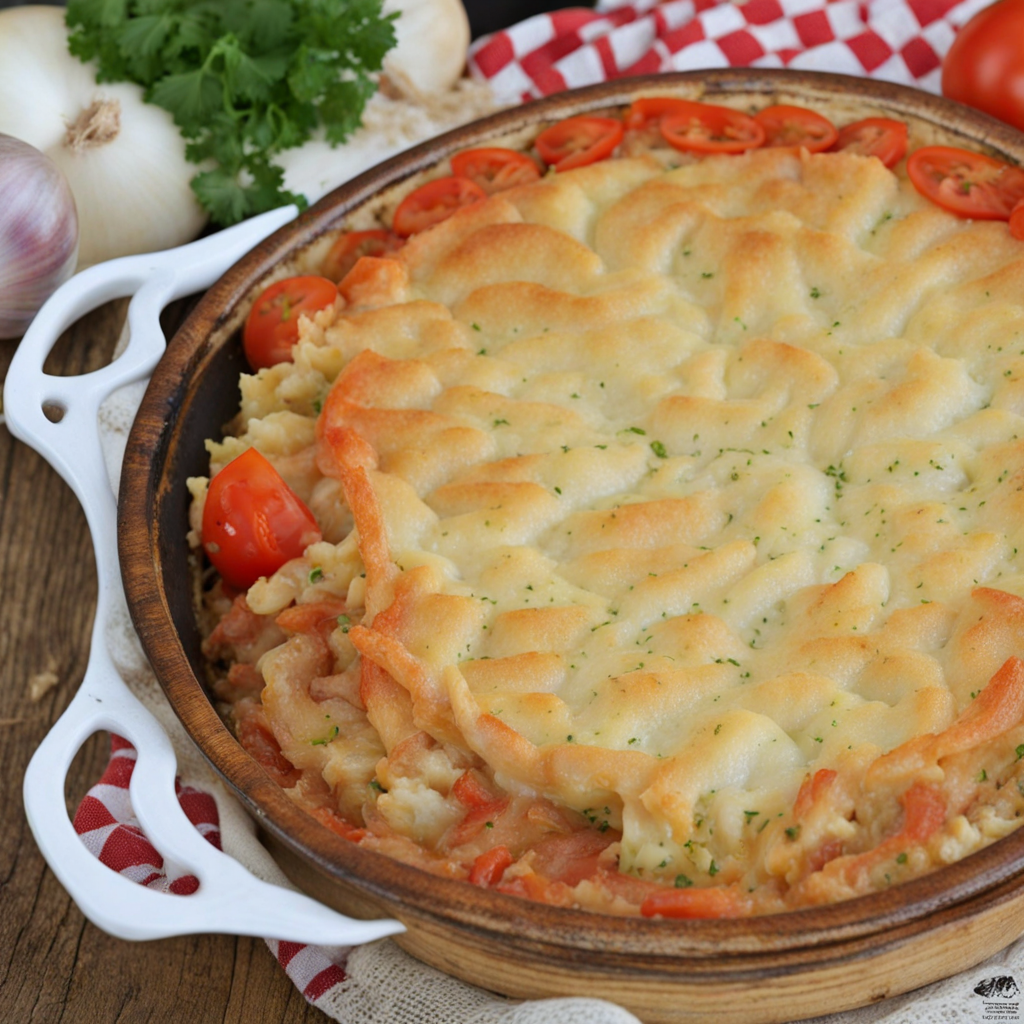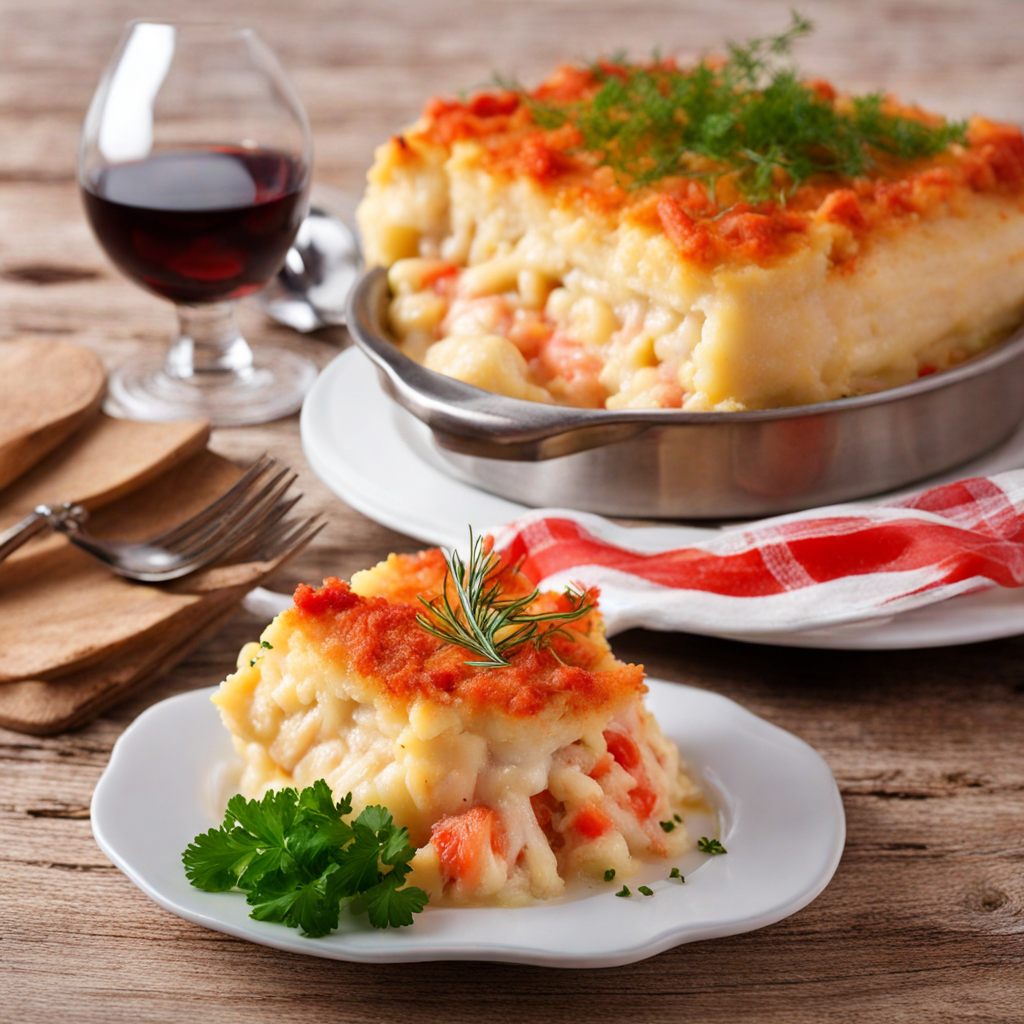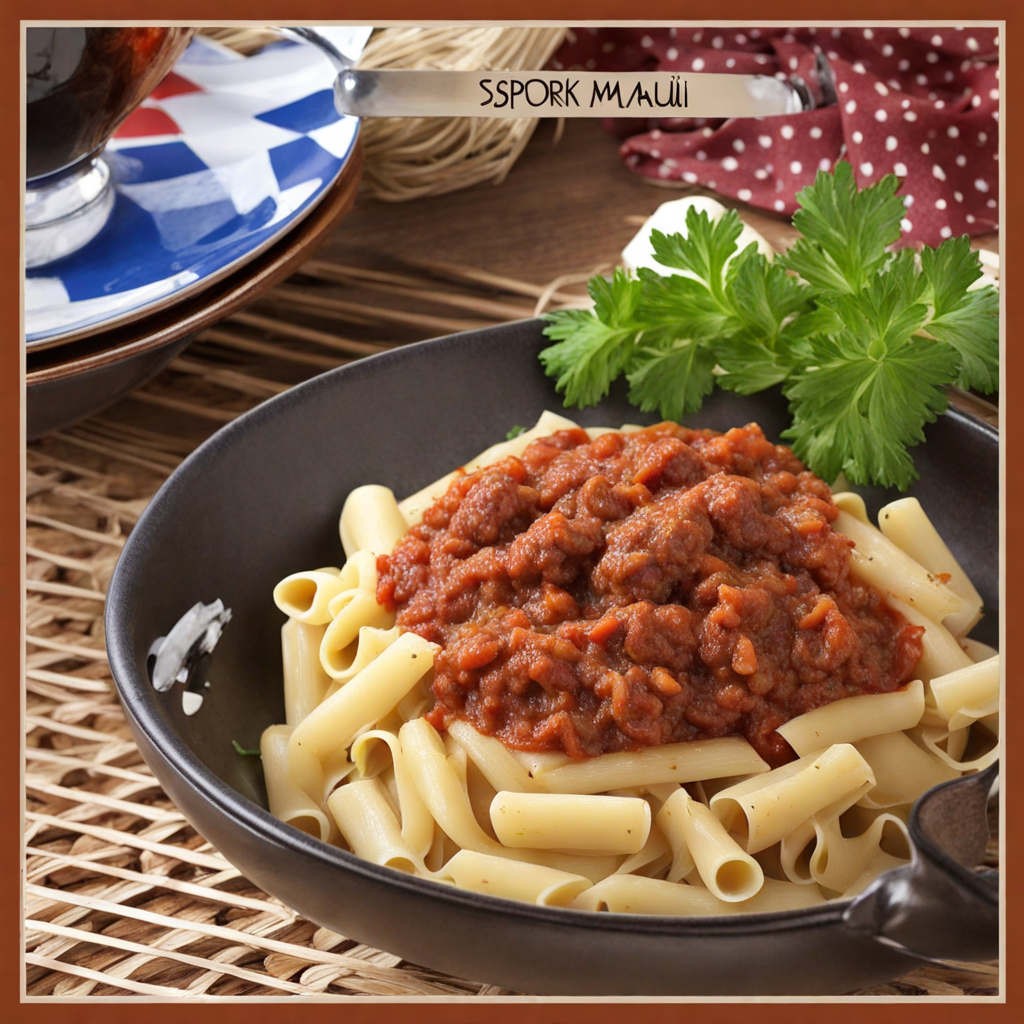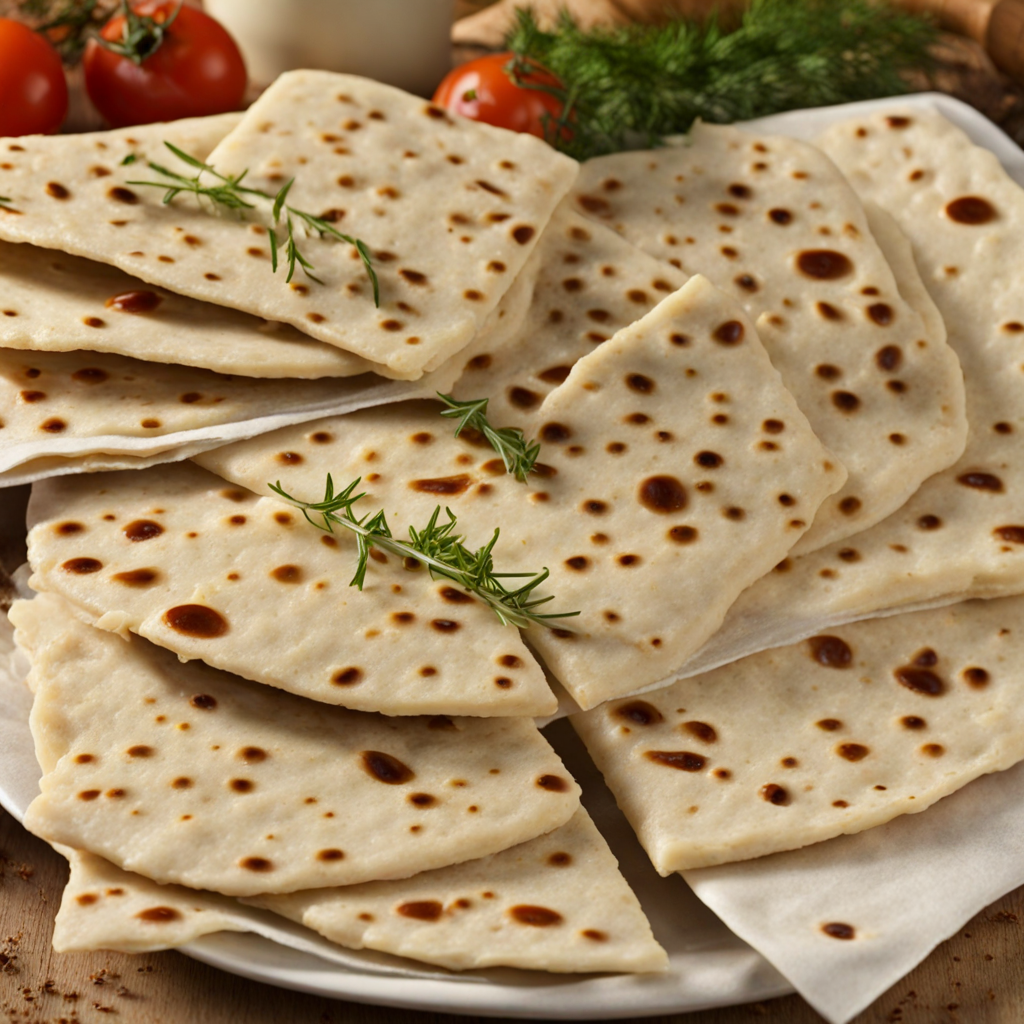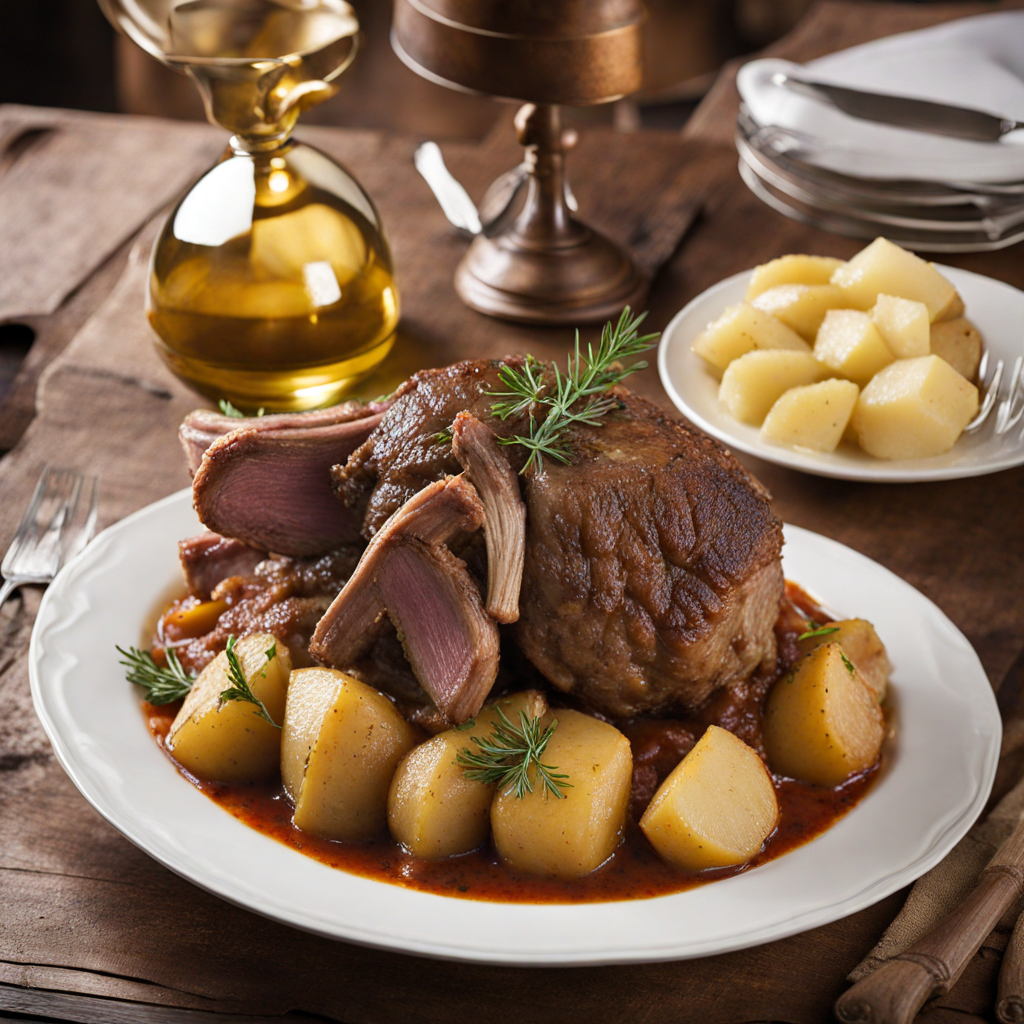Viska Pogaca
Viska Pogaca is a delightful Croatian pastry that hails from the picturesque island of Vis. This traditional dish is a soft, fluffy bread that is often filled with a variety of savory ingredients, making it a perfect snack or light meal. The dough is typically made from simple ingredients such as flour, yeast, water, and a touch of salt, resulting in a base that is both light and airy. The real charm of Viska Pogaca lies in its fillings, which may include ingredients like fresh cheese, herbs, or even local cured meats, each adding a unique flavor profile to the dish. What sets Viska Pogaca apart is the way it is baked. The pastry is usually shaped into round or oval forms, and some variations might feature a beautiful golden crust that is crisp on the outside while remaining soft and tender on the inside. The aroma of freshly baked Pogaca wafts through the air, inviting anyone nearby to indulge in its warm, comforting embrace. As you take a bite, the flavors meld together beautifully, offering a delightful contrast between the rich filling and the airy dough. This pastry is not only a staple on the island of Vis but also a symbol of Croatian culinary heritage. Often enjoyed during family gatherings or festive occasions, Viska Pogaca can be served warm or at room temperature, making it a versatile treat. Whether paired with a refreshing salad or enjoyed on its own, this Croatian delicacy is sure to captivate your taste buds and transport you to the sun-kissed shores of the Adriatic Sea.
How It Became This Dish
The History of Viška Pogača: A Culinary Treasure from Croatia #### Origins Viška pogača, a traditional bread hailing from the island of Vis in Croatia, boasts a rich history deeply intertwined with the island’s culture and social fabric. This unique dish is a savory pie that embodies the flavors and ingredients local to the region, reflecting centuries of culinary evolution influenced by the Mediterranean lifestyle. The origins of Viška pogača can be traced back to the island's agrarian roots, where local farmers and fishermen would prepare simple yet hearty meals using what was readily available. The key ingredients of the pogača, including flour, olive oil, and various fillings such as potatoes, cheese, and herbs, were abundant on the island, making it a practical and nourishing food choice. This bread was not merely sustenance; it played a vital role in the communal and familial gatherings that characterized island life. #### Cultural Significance Viška pogača holds a special place in the hearts of the people of Vis. Traditionally, it was prepared for special occasions, celebrations, and family gatherings, making it a symbol of hospitality and communal spirit. The preparation of this dish often involved the participation of family members, fostering bonds and creating a sense of togetherness. In the context of Croatian culture, food is not merely about nourishment; it is an expression of identity and heritage. Viška pogača represents the island's historical influences, including those from the Greeks, Romans, and later the Venetians, whose interactions with the region left an indelible mark on local cuisine. The melding of these culinary traditions is evident in the flavors and techniques used in preparing Viška pogača, making it a living testament to the island's diverse history. The dish is particularly significant during specific festivities. For example, during the Feast of St. Vitus, the patron saint of Vis, families would prepare Viška pogača as part of the celebrations, reinforcing its role in the community's cultural rituals. The act of sharing this dish among friends and family during such occasions underscores its emblematic status as a food that brings people together. #### Development Over Time Like many traditional foods, Viška pogača has evolved over the years, adapting to changing tastes, available ingredients, and culinary innovations. Originally a simple bread made with basic ingredients, its preparation has become more elaborate over time. The traditional recipe has inspired numerous variations, with local chefs and home cooks experimenting with different fillings and methods, yet always maintaining the essence of the dish. During the 20th century, as tourism began to flourish in Croatia, Viška pogača gained recognition beyond the island. Visitors to Vis were enchanted by its rustic charm and flavor, leading to its inclusion in menus at local restaurants and cafes. As the demand for authentic Croatian cuisine grew, chefs began to showcase this dish, furthering its popularity and cementing its status as a culinary hallmark of the region. In recent years, Viška pogača has seen a revival as part of the broader movement to preserve traditional Croatian dishes. Culinary enthusiasts and local food advocates have worked diligently to keep the recipes alive, often visiting older generations to learn about the techniques and stories behind the dish. Workshops and food festivals on the island celebrate this heritage, bringing together locals and visitors alike to enjoy the flavors of Vis and participate in the age-old tradition of bread-making. #### Ingredients and Preparation The traditional preparation of Viška pogača begins with the dough, which is made from flour, water, yeast, and olive oil. The dough is allowed to rise before being rolled out, creating a flaky and tender crust. The fillings are where creativity shines; while the classic version includes a mixture of potatoes, cheese (often sheep's cheese), and various herbs like rosemary, modern interpretations may introduce seasonal vegetables, cured meats, or even seafood. Once the dough is prepared and the filling is assembled, the pogača is folded over and baked until golden brown. The aroma that fills the air during this process is a nostalgic reminder of home for many locals, evoking memories of family gatherings and shared meals. #### Viška Pogača Today Today, Viška pogača remains a beloved dish not only on Vis but throughout Croatia. It has become a symbol of the island’s culinary heritage, often featured in gastronomic tours that showcase traditional Croatian foods. As the island continues to attract tourists, the pogača serves as a delicious introduction to the rich flavors of Dalmatia. Moreover, the dish has found its way into the hearts of food lovers worldwide. With the rise of global interest in regional cuisines, Viška pogača is now celebrated in culinary circles beyond Croatia. Cookbooks and blogs dedicated to Croatian cuisine feature this savory pie, inviting home cooks around the globe to try their hand at making it. Social media platforms have also played a pivotal role in the dish’s resurgence, with countless posts showcasing beautifully crafted Viška pogača. These images have sparked curiosity and admiration, encouraging a new generation to learn about and appreciate the cultural significance of this traditional food. #### Conclusion Viška pogača is more than just a delicious pie; it is a narrative woven into the tapestry of Croatian culture and history. From its humble origins on the island of Vis to its status as a cherished symbol of family and community, this dish represents the resilience and creativity of the Croatian people. As it continues to evolve and adapt, Viška pogača remains a testament to the enduring power of food as a connector of people and traditions, inviting all to share in its rich, savory history. Whether enjoyed on the shores of Vis or in homes around the world, Viška pogača invites everyone to partake in a slice of Croatian heritage.
You may like
Discover local flavors from Croatia


